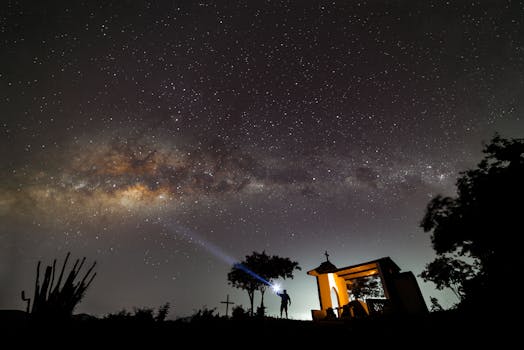
“
Beyond the Milky Way: Imagining New Worlds and Possibilities
Introduction to Space Exploration and the Milky Way
Beyond the Milky Way: Imagining New Worlds and Possibilities is an exciting and thought-provoking topic that has captured human imagination for centuries. The Milky Way, our home galaxy, is just one of billions of galaxies in the observable universe, each containing billions of stars and potentially, billions of planets. As we continue to explore our own solar system and beyond, we are forced to consider the possibilities of life existing elsewhere in the universe. For more on this theme, check out Galaxies of Dreams: How Imagination Transcends the Night Sky.
Understanding the Scale of the Universe
The universe is vast, with estimates suggesting that there are over 100 billion galaxies, each containing billions of stars. The distances between these galaxies are so great that even at high speeds, such as those achieved by spacecraft, it would take many years to reach even the nearest star outside of our solar system. Despite these vast distances, the possibility of life existing elsewhere in the universe is considered to be quite high by many scientists. This concept is further explored in From Stardust to Dreams: Imagining Life Beyond the Stars.
Imagining New Worlds
As we explore the possibilities of life beyond our planet, we are forced to imagine what other worlds might be like. Would they be similar to Earth, with liquid water and a stable atmosphere, or would they be vastly different, with conditions that are hostile to human life? The discovery of exoplanets, which are planets that orbit stars other than the Sun, has provided new insights into the possibilities of life existing elsewhere in the universe. For a deeper dive into the power of imagination in this context, read Soaring Through the Cosmos: The Power of Imagination Beyond the Stars.
Possibilities for Human Existence
The possibility of human existence beyond Earth is a topic of much debate and speculation. With the development of new technologies, such as advanced propulsion systems and life support systems, the possibility of human travel to other planets and galaxies becomes more feasible. However, the challenges of space travel, including radiation exposure and the effects of long-term weightlessness, must be overcome before human travel to other galaxies can become a reality.
Conclusion and Takeaways
In conclusion, the possibilities beyond the Milky Way are endless and thought-provoking. As we continue to explore our own solar system and beyond, we are forced to consider the possibilities of life existing elsewhere in the universe. The discovery of exoplanets and the development of new technologies have brought us closer to making human travel to other galaxies a reality. Takeaways: the universe is vast and full of possibilities, the possibility of life existing elsewhere in the universe is considered to be quite high, and human travel to other galaxies is a topic of much debate and speculation.






